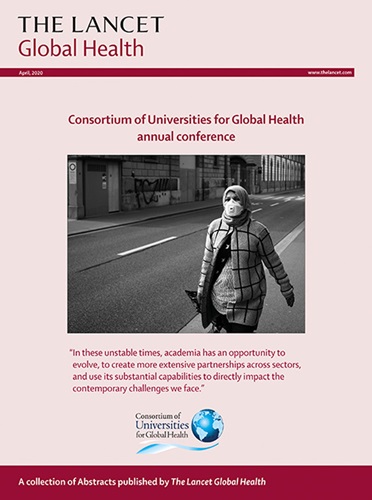实现消除宫颈癌:利用政策决定因素模型对全球决定因素进行生态评估。
IF 19.9
1区 医学
Q1 PUBLIC, ENVIRONMENTAL & OCCUPATIONAL HEALTH
引用次数: 0
摘要
各国必须实施和扩大有效规划,以实现世卫组织《2030年消除宫颈癌目标》;然而,系统性挑战依然存在。本研究旨在确定与实现人乳头瘤病毒疫苗接种和筛查、癌症治疗的目标覆盖率以及政策改革和卫生系统加强的机会领域相关的关键经济、政治、社会文化和卫生系统决定因素。在这项生态学研究中,我们开发了一个政策决定因素模型(PDM),使用以下概念框架来评估关键的政策决定因素:健康的社会决定因素、世界卫生组织的基本要素和全民健康覆盖。通过识别位于公开可用的全球数据集中的直接或代理变量,在PDM内对核心框架域进行操作。采用生态学方法,将PDM应用于宫颈癌作为疾病焦点。Kendall’s和Pearson’s相关系数衡量了政策指标与衡量世卫组织消除疫苗接种、筛查和治疗目标覆盖率的指标之间的关联强度。研究结果分析了来自155个国家的39个政策决定指标的数据。衡量以公平为重点的经济、社会和公共政策的指标具有很大的正相关性,根据世卫组织的目标,国家一级的筛查和治疗覆盖率报告的值更高。衡量卫生系统绩效的指标评估同样表明,核心卫生系统的能力和可用性与消除宫颈癌的进展有关。国家癌症控制规划与实现目标覆盖率的相关性很低或没有相关性,表明执行不力。社会、经济、文化和环境政策与卫生系统绩效和公平获得医疗服务相结合,在国家实现2030年消除目标的能力中发挥着不可或缺的作用。在利用消除宫颈癌议程方面,各国有机会利用全球势头和资金,推动更广泛的卫生系统加强、投资和政策改革。澳大利亚国家健康和医学研究中心。本文章由计算机程序翻译,如有差异,请以英文原文为准。
Achieving cervical cancer elimination: an ecological assessment of global determinants using a policy determinant model.
BACKGROUND
Countries must implement and scale up effective programmes to achieve the WHO 2030 cervical cancer elimination targets; however, systemic challenges exist. This study aimed to determine key economic, political, sociocultural, and health-system determinants associated with achieving target coverage of human papillomavirus vaccination and screening, cancer treatment, and areas of opportunity for policy reform and health system strengthening.
METHODS
In this ecological study, we developed a policy determinant model (PDM) to assess key policy determinants of interest using the following conceptual frameworks: social determinants of health, WHO building blocks, and universal health coverage. Core framework domains were operationalised within the PDM through identification of direct or proxy variables located in publicly available global datasets. The PDM was applied with cervical cancer as the disease focus, using an ecological approach. Kendall's and Pearson's correlation coefficients measured the strength of associations between policy indicators and indicators measuring WHO elimination target coverage for vaccination, screening, and treatment.
FINDINGS
Data from 155 countries across 39 policy determinant indicators were analysed. Indicators measuring equity-focused economic, social, and public policies had large positive associations, with higher values reported for country-level screening and treatment coverage, per WHO targets. Assessment of indicators measuring health system performance likewise showed core health system capability and availability to be associated with progress in cervical cancer elimination. National cancer control planning had low or no associations with achieving target coverage, indicating ineffective implementation.
INTERPRETATION
Social, economic, cultural, and environmental policies, in conjunction with health system performance and equitable access to care play integral roles in country capacity to achieve the 2030 elimination targets. In harnessing the cervical cancer elimination agenda, nations have the opportunity to leverage global momentum and funding to drive broader health system strengthening, investment, and policy reform.
FUNDING
Australian National Health and Medical Research Centre.
求助全文
通过发布文献求助,成功后即可免费获取论文全文。
去求助
来源期刊

Lancet Global Health
PUBLIC, ENVIRONMENTAL & OCCUPATIONAL HEALTH-
CiteScore
44.10
自引率
1.20%
发文量
763
审稿时长
10 weeks
期刊介绍:
The Lancet Global Health is an online publication that releases monthly open access (subscription-free) issues.Each issue includes original research, commentary, and correspondence.In addition to this, the publication also provides regular blog posts.
The main focus of The Lancet Global Health is on disadvantaged populations, which can include both entire economic regions and marginalized groups within prosperous nations.The publication prefers to cover topics related to reproductive, maternal, neonatal, child, and adolescent health; infectious diseases (including neglected tropical diseases); non-communicable diseases; mental health; the global health workforce; health systems; surgery; and health policy.
 求助内容:
求助内容: 应助结果提醒方式:
应助结果提醒方式:


